Using your shop’s Cost of Doing Business (CODB) as a baseline for labor rates.

For some reason, my grade school library had a subscription to “Hot Rod” magazine. My suspicion has always been that it was one of the few magazine subscriptions for boys my age that was acceptable to have in the school library. Nevertheless, I spent a lot of time in that library paging through those magazines and looking at the rad cars. Back then, all I knew about hot rods was that they were the cars in the ZZ Top music videos. But it was the beginning of my early fascination with classic, antique, and hot rod automobiles.
And I’m not the only one. In fact, some of today’s mechanics first had their automotive interests piqued by paging through “Hod Rod” magazine in their salad days. For example, Michael Gotzon, owner and CEO at Reasonable Auto Services LLC (an automotive repair shop), says it played a part in getting him interested in working on cars. “Everyone makes fun of me for spelling “kool” with a “k,” when in reality it’s because of Kustom Kar Kulture. Before going into the production end of the business, all I ever wanted to do was build Kustom old school hot rods. I always had an interest in mechanics and going fast. Growing older, reading the magazine, seeing what could be done, and starting to appreciate the artistic side of it, I always wanted to open an old school hot rod shop.” Ultimately, though, Michael realized that small custom shops often struggle to make money, “so I went down the production side, but I became a painter and would do as much Kustom stuff as I could, a lot of times using the magazine for ideas or references.”
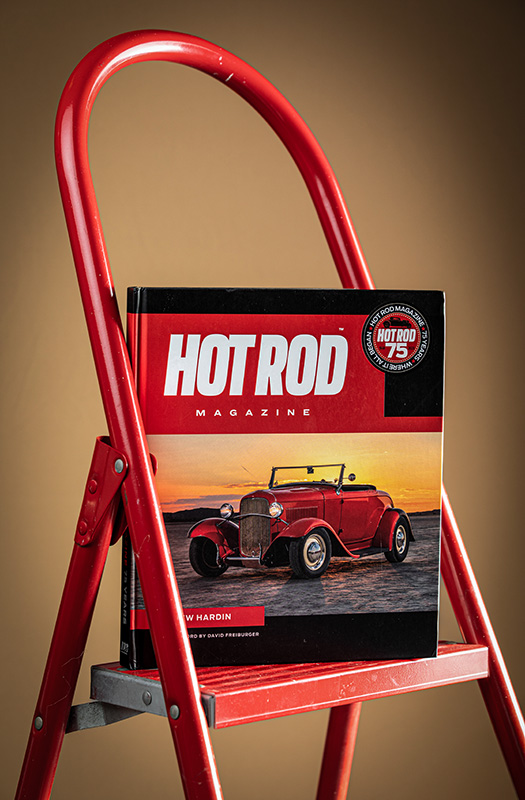
Before the internet, “Hot Rod” had “Hot Rod Mart” classifieds in the back of the magazine advertising everything from parts to full cars available to buy from other readers. If you were inspired to try your hand at building a rod, you had an invitation right there at the back of magazine to make an attempt at it. What’s more, trying to soup up an old car for performance may even prepare one to become a better repair tech down the line. Modding an older car, trying to figure out how to boost its speed, while removing anything unnecessary from it, certainly helps mechanics understand what all those parts do and how they work together.
Despite the long, slow death of print media, “Hot Rod” magazine somehow continues to survive. It scaled back from a monthly magazine to a quarterly magazine in 2024, but it’s still kicking. In 2023 it celebrated its 75th anniversary, and Quarto published a book celebrating the anniversary, “Hot Rod Magazine: 75 Years.”
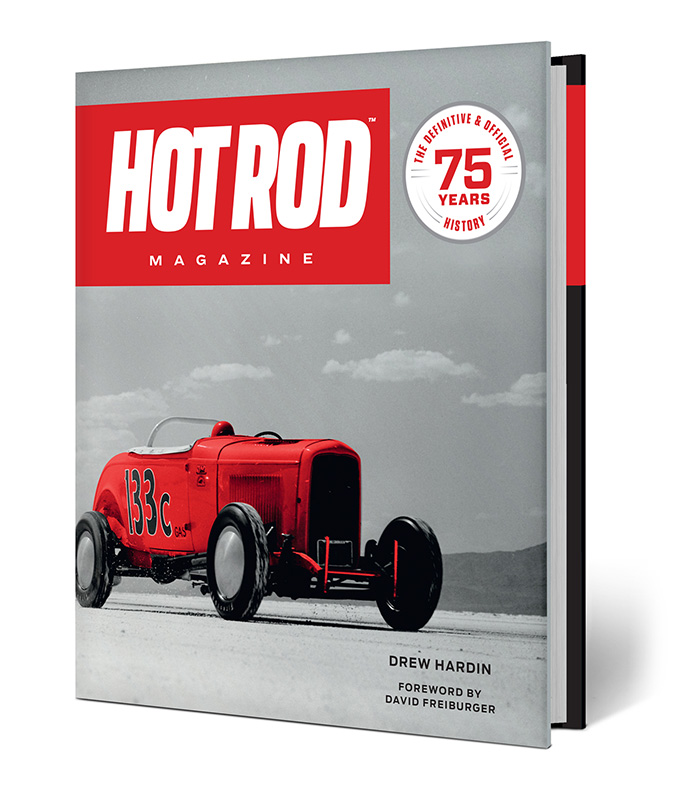
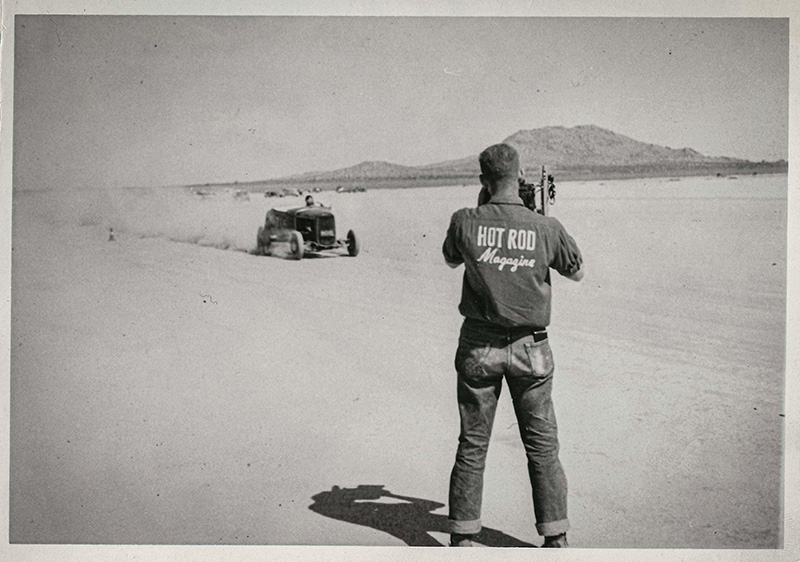
The book is a captivating journey through the decades of automotive innovation and culture. Author Drew Hardin, a former Editor and Editorial Director of the magazine, expertly curates a visual feast of iconic cars, groundbreaking builds, and the passionate individuals who have shaped the hot rod scene. The book isn’t strictly a coffee table book, nor a text-heavy history of the magazine. Instead, it’s somewhere in between, offering some beautiful photos as well as a solid history of the publication.
The book is a treasure trove for car enthusiasts, offering a nostalgic trip down memory lane. From the early days of backyard tinkering to the high-stakes world of drag racing, each era is meticulously documented with stunning photography and insightful commentary.
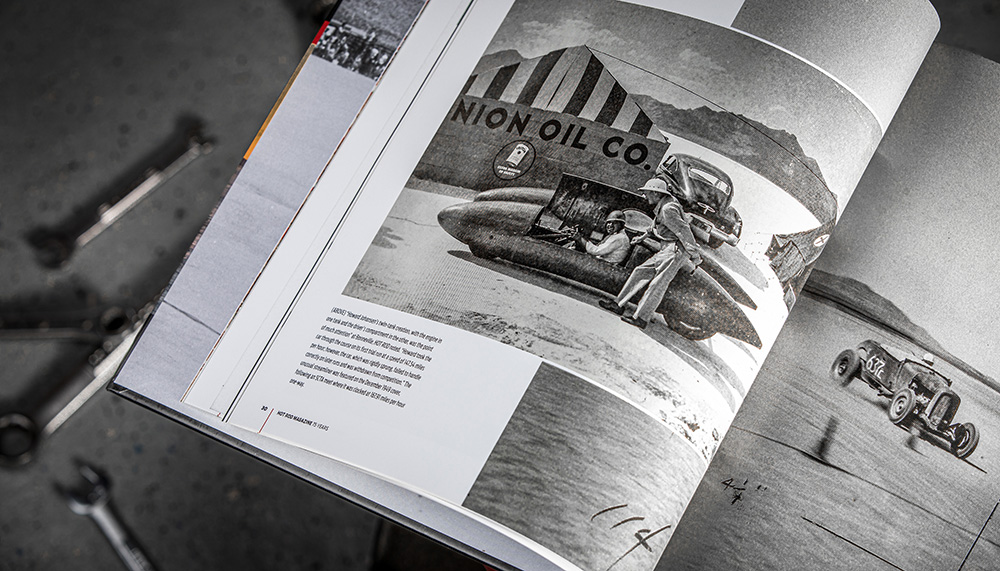
However, the book’s true strength lies in its ability to capture the spirit of the hot rod culture. It’s not just about the cars; it’s about the camaraderie, the DIY ethos, and the endless pursuit of speed and style. Hardin skillfully weaves together the stories of ordinary enthusiasts and professional builders, highlighting the shared passion that unites them.
Divided by decades as the book is, you can see the changing trends in hot rodding over the years, from racing stripped down Model Ts and Studebakers in the Mojave Desert, through the boom of the 1950s and 1960s, the challenges of tightening emissions restrictions and the oil embargo in the 1970s, and the ongoing fascination with hot rodding that continues today. In addition, the book covers many of “Hot Rod’s” other endeavors, including magazine spinoffs (“Hot Rod Deluxe,” “Hot Rod Junior,” etc.), Hot Rod Magazine TV, and the events they held, including Championship Drags and Power Festivals.
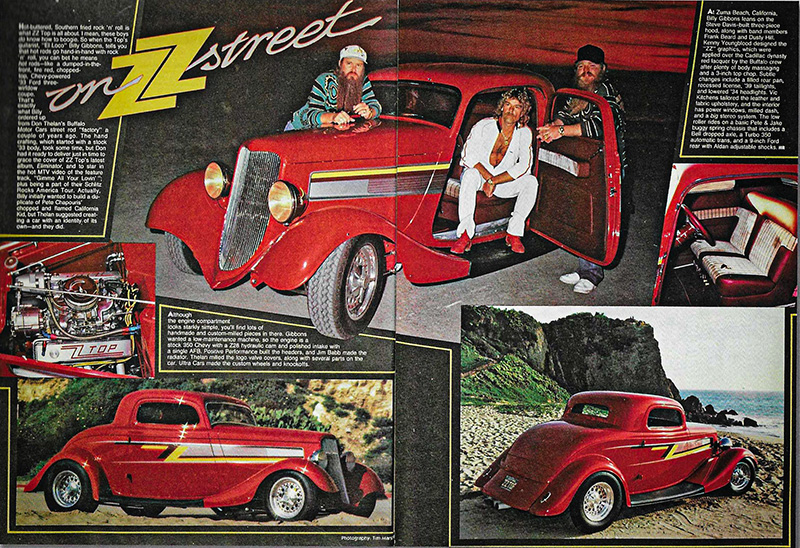
The articles and other content contained on this site may contain links to third party websites. By clicking them, you consent to Dorman’s Website Use Agreement.
Participation in this forum is subject to Dorman’s Website Terms & Conditions. Please read our Comment Policy before commenting.